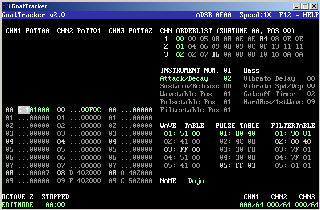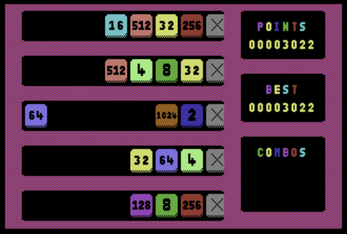

Commodore released music composition software which included a keyboard overlay suited for early model Commodore 64s. There were numerous sound editing tools for the Commodore 64.
Goattracker to video Pc#
This was in comparison to a typical PC for US$2000 (which required MS-DOS, and another $99 for Windows 1.0) or the venerable Mac 512K Enhanced also $2000. This was due in part to the aggressive pricing of the Commodore 64 as a games machine and home computer (With rebates, the C64 was going for as little as US$100 at the time). GEOS proved very popular because of low price for the necessary hardware (and of course the capability of the OS). KoalaPad and Lightpen users could use GEOS too, which greatly increased the amount of clip art available for the platform. It also supported most Commodore 64 peripherals and models of third-party printers. Being a fully-fledged OS, GEOS brought the arrival of many add-on fonts, accessories, and applications. Arguably the best office applications appeared on GEOS because it was graphically advanced and not limited by the Commodore 64's screen area of 40-columns.

Goattracker to video full#
Due to its speed, ease of use, and full suite of office applications and utility software, GEOS provided a work environment similar to that of an early Apple Macintosh. Serious Commodore 64 business users, however, were drawn to GEOS. The typical C64 spreadsheet could store 64 columns and 255 rows, or 16,000 cells, but only 5-10% of them could be used at any one time, due to RAM limitations. In Germany and Scandinavia, many popular application programs were published by German company Data Becker. A complete office suite arrived in the form of British made Mini Office II. The first Lotus 1-2-3-like integrated software package for the 64 was Viza Software's Vizastar.

The MultiPlan spreadsheet application from Microsoft was ported to the Commodore 64, where it competed against established packages such as Calc Result. There were many prepackaged wordprocessors available for the Commodore 64, such as PaperClip and Vizawrite, but a popular DIY program was SpeedScript, which was available as a type-in program from Compute!'s Gazette. Multiplan - spreadsheet program developed by Microsoft Lightpens and CAD drawing software were also commercially produced, such as the Inkwell Lightpen and related tools. "The Newsroom" was a desktop publishing suite. A Commodore 64 version of The Print Shop existed, allowing users to generate signs and banners with a printer. Another popular drawing program for the C64 was Doodle!.

The best known art package was perhaps KoalaPainter, primarily because of its own custom graphics tablet user interface - the KoalaPad. Info 64, the first magazine produced with desktop publishing tools, was created on and dedicated to the Commodore platform. While the 1541 disk drive's slow performance made the Commodore 64 mostly unsuitable as a business computer, it was still widely used for many important tasks, including computer graphics creation, desktop publishing, and word processing. 3 Type-ins, bulletin boards, and disk magazinesĪpplications, utility, and business software.1 Applications, utility, and business software.


 0 kommentar(er)
0 kommentar(er)
